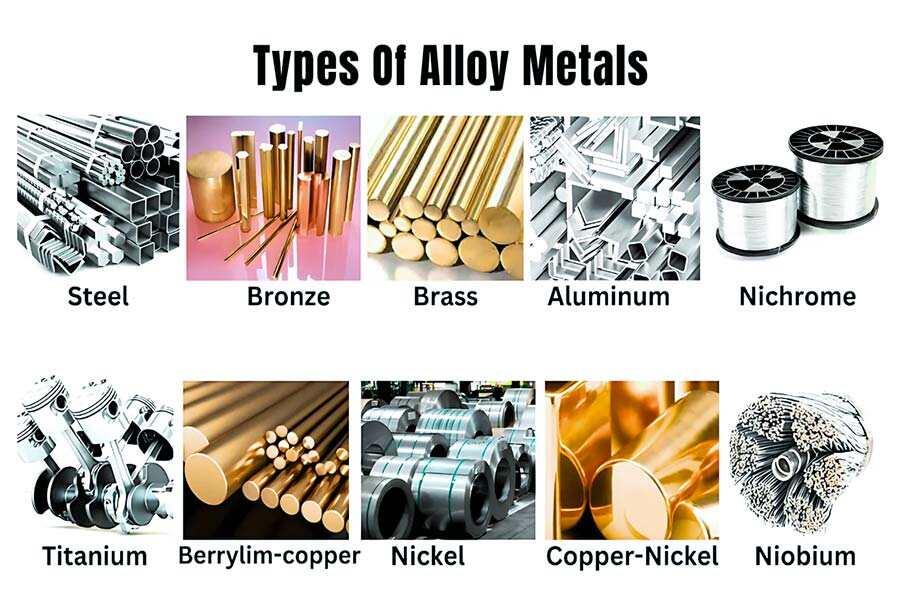Welding is the process or methodof joining two metals together using a welding arc. Welding is used in different fields and the welding process may vary depending on the metal used in the project. Choosing the type of metal to weld is a primary goal in achieving a strong and durable weld. Metal or filler material should be used depending on the project. With so many metals on the market, choosing the right one for your project is a critical issue. Let’s discuss the types of metals used in welding, the importance of choosing the right metal, and more.
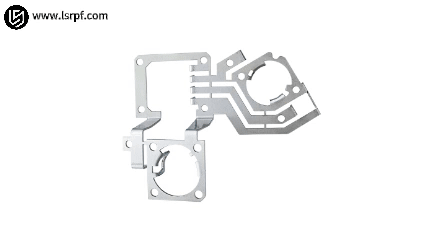
What Materials Are Used in metal welding?
There are manymaterials commonly used in metal welding. The following are some common metal materials and their applications in welding:
1 Steel:
- Mild steel:has good weldability and is often used to manufacture various structural parts and components.
Medium carbon steel: such as 45 steel, which has good comprehensive mechanical properties and is often used to manufacture high-strength moving parts, such as turbine impellers, compressor pistons, etc. - Alloy steel:such as 40Cr, which has good comprehensive mechanical properties after quenching and tempering. It is often used to manufacture medium-speed and medium-load parts, such as machine tool gears, shafts, etc. Mold steel is also atype of alloy steeland is often used to manufacture various molds.
2. Aluminum and Aluminum Alloys:
Aluminum alloys are lightweightand corrosion-resistant and are widely used in aerospace, automotive, electronic equipment, and home appliances industries. Laser welding of aluminum alloys can produce welded structures with extremely high strength and no risk of pores or cracking.
Stainless steelincludes austenitic stainless steel, ferritic stainless steel and martensitic stainless steel. Austenitic stainless steel has good welding performance, ferritic stainless steel has strong toughness, and martensitic stainless steel has unsatisfactory welding effect but low cost. Stainless steel is commonly used in the food and medical industries due to its hygienic properties.
4. Copper and Copper Alloys:
Copper and its alloys have high electrical conductivity, thermal conductivity and strength. Laser welding can weld copper materials quickly and efficiently and can be used to manufacture complex structural parts and electronic components.Copper and copper alloysare also commonly used in electrical and decorative applications.
5. Cast iron:
Althoughcast ironhas poor weldability, it can still be used to repair some important cast iron parts after proper welding repair processes, such as preheating and selecting appropriate welding rods.
6. Other non-ferrous metals:
Such as titanium, nickel, tin, chromium, niobium, gold, silver and other metals and their alloys. These metals show different welding characteristics in laser welding or other welding methods, and can be selected according to specific needs.
7.Special alloy:
Such as nickel-based alloys, cobalt-based alloys, etc. These alloys have special physical and chemical properties and are often used for welding in harsh environments such as high temperature, high pressure, and corrosion.
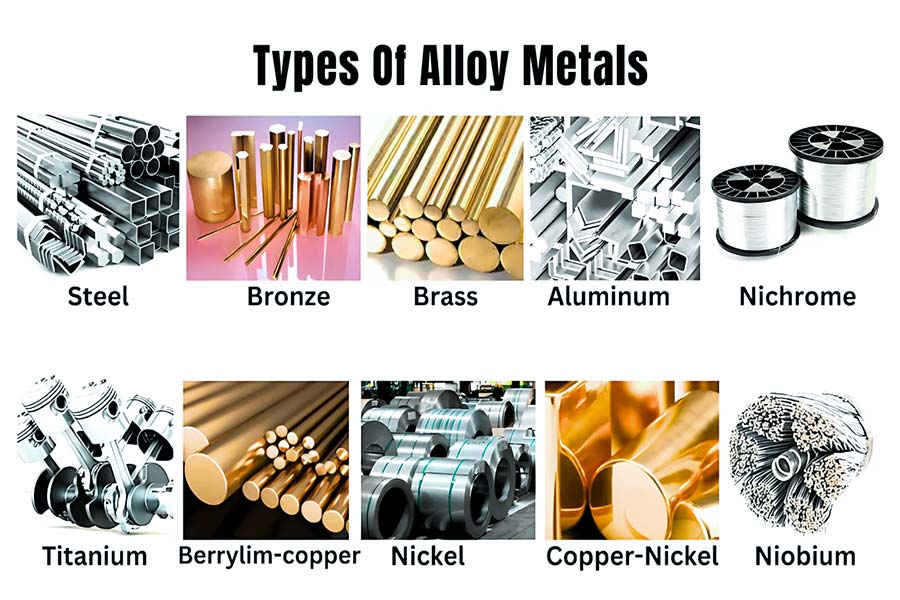
What Materials Are Used in Welding Rods?
Welding rodsare the key materials used in the welding process to conduct current, ignite the arc, and fuse the weld metal. It consists of two parts: welding core and coating. Different types of welding rods are suitable for differentwelding needs and metal materials. The following is an explanation of the role of welding rods and their composition, combining different types of welding rod materials such as mild steel rods, aluminum rods, nickel rods and special alloy rods:
1. The function of welding rod
- Conductive current:Thewelding rod acts as an electrode, conducts the welding current during the welding process, generates an arc, and converts electrical energy into heat energy.
- Ignition arc:When the welding rod comes into contact with the workpiece, the high temperature of the arc melts the welding rod and the workpiece to form a molten pool.
- Filler weld:After thewelding rod is melted, its metal part is used as filler metal to fuse with the base metal to form a weld, which enhances the strength and sealing of the welded joint.
2. Composition of welding rod
(1)Solder core:
- Material:Thewelding coreis usually made of a metal wire with a certain length and diameter. Common materials include mild steel, stainless steel, aluminum, nickel and their alloys, etc.
- Function:The main function of the welding core is to conduct current and serve as filler metal after melting. The composition of the welding core has a direct impact on the chemical composition and mechanical properties of the weld metal.
(2)Medicinal skin:
- Material:The coating is a coating that is pressed onto the surface of the welding core and is composed of a variety of minerals, metal oxides, organic matter, etc.
- Function:The coating plays a role in protecting the weld metal, stabilizing the arc, controlling the shape and size of the molten pool, deoxidizing, desulfurizing, and dephosphorizing during the welding process. Different types of welding rods have different coating compositions to adapt to different welding needs andmetal materials.
3. Different types of welding rod materials
(1)Low carbon steel rod welding rod
- Composition:The welding core is mainly made of low carbon steel, and the composition of the coating is determined according to specific needs.
- Application:Suitable for most general welding, such as welding of building structures, bridges, vehicles, etc. Mild steel electrodes have good welding performance and mechanical properties and can meet general welding needs.
(2)Aluminum rod welding rod:
- Composition:The welding core is made of aluminum or aluminum alloy, and the coating has a special composition to adapt to the welding characteristics of aluminum materials.
- Application:Specially used forwelding aluminum materials, such as aluminum alloy components in aerospace, automobiles, electronics and other fields. Aluminum welding rods have good corrosion resistance and lightweight properties, and can meet the requirements for strength and weight of welded joints.
(3)Nickel rod welding rod:
- Composition:The welding core is made of nickel or nickel alloy, and the composition of the coating is determined according to thespecific welding needs.
- Application:Commonly used for high-temperature, corrosion-resistant welding, such as nickel-based alloy components in nuclear energy, chemical industry, aerospace and other fields. Nickel electrodes have good high temperature resistance and corrosion resistance and can meet the welding needs in extreme environments.
(4)Special alloy rod welding rod:
- Composition:The welding core is made of special alloy, such as cobalt-based alloy, copper-nickel alloy, etc. The composition of the coating is determined according to the characteristics of the alloy.
- Application:Designed for specificwelding applications. For example, cobalt-based alloy electrodes are used for welding in harsh environments such as high temperature, high pressure, and strong corrosion; copper-nickel alloy electrodes are used for welding that require corrosion resistance such as marine engineering and chemical equipment. Special alloy electrodes can meet the special performance requirements of welded joints.
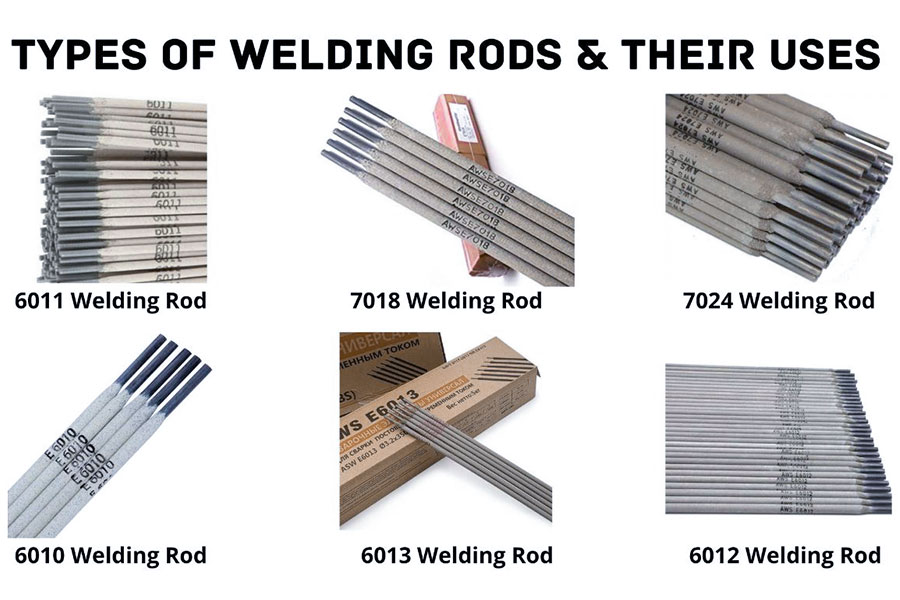
What Are the Elements and Compounds in Welding?
During thewelding process,a variety of elements and compounds are involved, each playing a key role.
Flow:
| Function | Criticality |
| The main function of flux is to protect the weld pool from pollution and ensure the quality of welded joints. It can improve the wettability and bonding strength of welding by removing oxides, grease and other impurities on the metal surface. | The use of flux is crucial to prevent welding defects (such as pores, slag inclusions, etc.), and it contributes to good weld appearance and mechanical properties. |
Protective gas:
| Common types | Argon, helium and carbon dioxide are commonly used shielding gases in MIG (metal inert gas welding) and TIG (tungsten inert gas welding). |
| Argon | It is highly inert and can effectively prevent the weld metal from chemically reacting with oxygen, nitrogen, etc. in the air at high temperatures, thus avoiding the occurrence of defects such as pores and cracks. |
| Helium | Its thermal conductivity is higher than argon and is suitable for welding processes with high heat input, but the cost is relatively high. |
| Carbon dioxide | Although not as inert as argon and helium, it is less expensive and is often used in MAG (metal active gas welding). When mixed with argon, it can improve welding efficiency and reduce costs. |
| Function | The shielding gas covers the weld area to prevent the intrusion of harmful gases such as oxygen and nitrogen in the air, thereby protecting the weld metal from pollution and oxidation. |
Filling:
| Definition | Function | Criticality |
| Filler refers to the material added to strengthen the joint during the welding process, usually in the form of welding wire or electrode. | The filler is not only used to fill the weld to ensure that the size and shape of the weld meet the design requirements, but also improves the mechanical properties and corrosion resistance of the weld metal through its alloy composition. | Choosing the right filler is critical to ensuring the quality and performance of welded joints. |
What Are the Different Types of Metal Welding?
Metal welding is an important process for joining metals.Welding methodscan be divided into many types according to the degree of heating and process characteristics during the welding process. Here are some common types of metal welding:
1. MIG Welding (Gas Metal Arc Welding – GMAW)
Anarc welding methodthat uses a molten electrode and an external gas as the arc medium to protect the metal droplets, welding pool and high-temperature metal in the welding zone. The protective gas usually uses inert gas (such as argon or helium), which is suitable forwelding materialssuch as aluminum and aluminum alloys, copper and copper alloys, and stainless steel. There is almost no oxidation and burning loss during the welding process, the metallurgical process is simple, and the cost is relatively low.
2. TIG Welding (Gas Tungsten Arc Welding – GTAW)
A non-melting tungsten electrode is used to generate an arc under the protection of inert gas to heat and melt the workpiece. Thewelding quality is highand it is suitable for high-quality welding of various metal materials, including carbon steel, stainless steel, aluminum alloy, etc. The arc is stable and the thermal efficiency is high, enabling high-speed and continuous welding.
3. Stick Welding (Shielded Metal Arc Welding – SMAW)
An easy-to-operate andhighly flexible welding methodthat can adapt to the welding needs of various steel materials, different thicknesses and various spatial locations. The quality of the weld is greatly affected by the technical level of the welder, which requires the welder to have high operating skills and experience. The equipment is simple and low-cost, and is suitable for welding small batches, multiple varieties, and complex-shaped workpieces.
4. Flux-Cored Arc Welding (FCAW)
The meltableflux-cored weldingwire is used as the electrode, the base material is used as the other electrode, and pure CO2 or CO2+Ar gas is used as the protective gas. The welding wire is filled with a flux mixture that creates a thin layer of liquid slag that envelops the droplets and covers the molten puddle during welding, providing additional protection. It is suitable for automatic welding, semi-automatic welding or fully automatic welding. It has high welding efficiency and is suitable for welding carbon steel, low-parameter alloy steel, stainless steel and cast iron.
5. Submerged Arc Welding (SAW)
The arc burns under the flux layer, and the machine automatically completes arc ignition, electrode feeding, arc movement and other actions. The welding current is large, the productivity is high, and the penetration depth is large, which can save groove processing time and welding materials. The protection effect is good, the metallurgical process is perfect, thewelding parameters are stable, and the weld shape is beautiful. However, the adaptability is poor, it is only suitable for flat welding positions, and the equipment structure is complex and the investment is large.
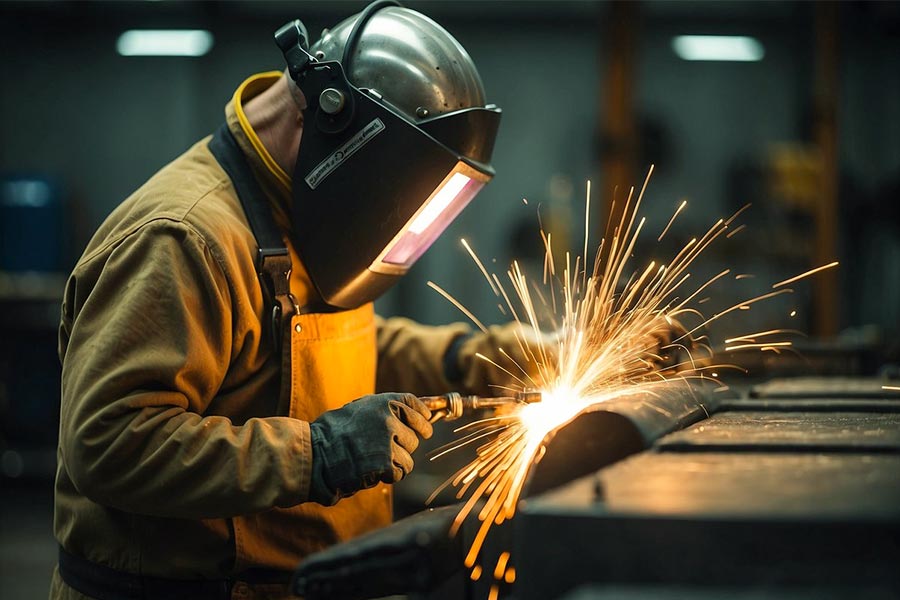
FAQs
1.What are the most common metals used in welding?
In the welding process, the most commonly used metals mainly include carbon steel, stainless steel, aluminum alloys and copper alloys. Carbon steel: Carbon steel is a common metal material, mainly composed of carbon and iron, with good weldability and mechanical properties. It is widely used in manufacturing building structures, automobiles, machinery and equipment, etc. Stainless steel: Stainless steel is a steel with a high chromium content that has excellent corrosion resistance and high temperature resistance. It is commonly used in the manufacture of kitchen utensils, medical equipment, chemical equipment, etc. Aluminum alloy: Aluminum alloy is a lightweight, high-strength metal material with good thermal conductivity and corrosion resistance. It is widely used in aviation devices, automobile parts, building structures and other fields. Copper alloy: Copper alloy has good electrical and thermal conductivity, as well as good corrosion resistance. Therefore, it is often used in the manufacture of electronic components, plumbing pipes, marine equipment, etc.
2.Which is used in welding metals?
Metals used for weldingusually include carbon steel, stainless steel, aluminum alloys and copper alloys mentioned above. In addition, there are some special-purpose metal materials, such as cast iron, tool steel, alloy steel, etc., that may also be used in specific welding applications.
3.What elements are used in welding?
During the welding process, thewelding wire or electrodemay contain a variety of alloying elements, which have an important impact on the welding quality and performance. Common alloying elements include: Silicon (Si): Silicon is the most commonly used deoxidizing element in welding wire, which can prevent iron from combining with oxygen and reduce FeO. Manganese (Mn): Manganese increases the strength and toughness of the weld metal. Chromium (Cr): Chromium in alloy steel can improve the oxidation resistance and mechanical properties at high temperatures. It is also an important component element of austenitic steel. Aluminum (Al): Aluminum is one of the strong deoxidizing elements, which can effectively inhibit the chemical reaction of CO gas generated in the molten pool and improve the ability to resist CO pores. Titanium (Ti): Titanium is also a strong deoxidizing element and can synthesize TiN with nitridation to fix nitrogen and improve the resistance of the weld metal to nitrogen pores. Molybdenum (Mo): Molybdenum can improve the strength and hardness of steel, refine the grains, and prevent temper brittleness and overheating tendencies. Vanadium (V): Vanadium can increase the strength of steel, refine grains, reduce the tendency of grains to grow, and improve hardenability.
4.What material is used in welding rod?
There are manytypes of welding rodsand the materials used in them vary. Commonwelding rod materialsinclude: Carbon steel welding rod: used for welding carbon steel and low-strength low-alloy steel. Stainless steel welding rod: Coated with stainless steel as raw material, used for welding stainless steel, widely used in chemical industry, fertilizer, petroleum, medical machinery manufacturing and other industries. Cast iron welding rod: used for welding cast iron materials, characterized by high strength and good plasticity. Aluminum alloy welding rod: with pure aluminum as the welding core, used for welding aluminum alloy materials. Silver electrode: Made of silver or silver-based solid solution, it has excellent process performance and wettability, and is suitable for welding a variety of metals. Alloy steel welding rods: including low alloy steel welding rods, medium alloy steel welding rods and high alloy steel welding rods, used for welding metals with special requirements for strength, toughness, low temperature performance and crack resistance.
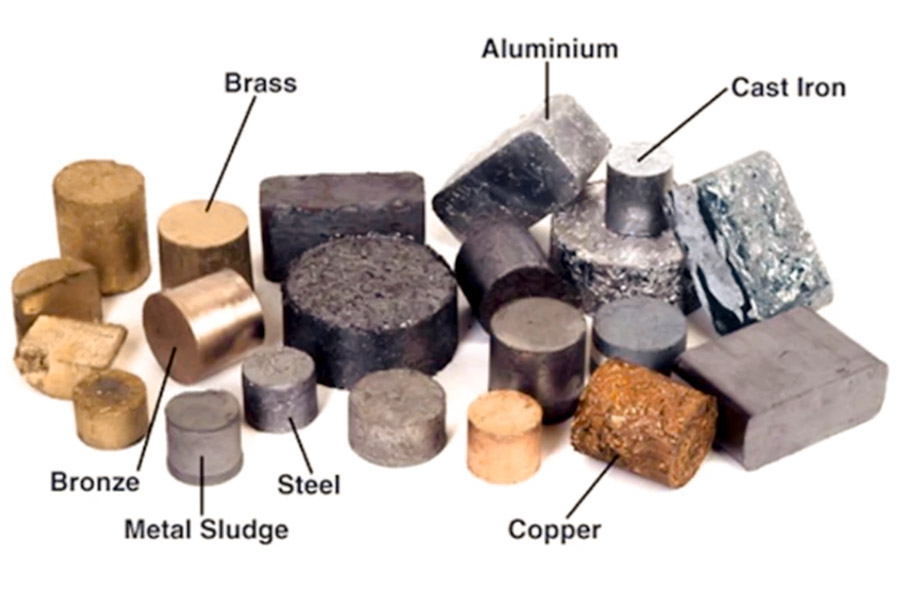
Summary
Theselection of metal welding materialsis a comprehensive consideration process, which needs to be comprehensively considered based on many factors such as the mechanical requirements of the welded joint, the working environment, the chemical composition of the base metal, and the welding process performance. Only by selecting appropriate welding materials can the quality and reliability of the welded joints be ensured, thereby improving the safety and service life of the entire structure.
Disclaimer
The content on this page is for reference only.LSdoes not make any express or implied representation or warranty as to the accuracy, completeness or validity of the information. No performance parameters, geometric tolerances, specific design features, material quality and type or workmanship should be inferred as to what a third party supplier or manufacturer will deliver through the Longsheng Network. It is the responsibility of the buyerseeking a quote for partsto determine the specific requirements for those parts.Pleasecontact usfor moreinformation.
LS Team
This article was written by multiple LS contributors. LS is a leading resource in the manufacturing sector, withCNC machining,sheet metal fabrication,3D printing,injection molding,metal stamping, and more.


